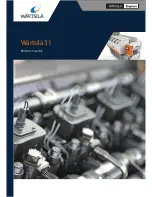
22
Rev. 1.0
0012072012
TSM24P User Manual
+86-400-820-9661
4.2 Basic Configuration
The Control Mode of TSM24P is Position Mode.
4.2.1 Maximum Currents
Continuous - The current that can be sustained indefinitely.
Boost - An TSM drive can provide a momentary current boost.
This allows for greater acceleration rates than would otherwise
be possible. To assure reliable motor operation, the drive
automatically ramps the current down after one second so that the average current does not
exceed the motor’s rating.
4.2.2 Digital Input Filter
The
Digital Input Filter
is a hardware filter designed to
remove noise content from the digital inputs. The Digital Filter
is programmable and can be set from a minumum of 0.067
microseconds pulse width to a maximum of 12.867 microseconds.
The filter setting is applied to all three of the digital inputs - X1/
STEP, X2/DIR, and Input #3 (EN).
This is a pulse width filter but the frequency can be calculated by multiplying the pulse time by 2
and then dividing 1 by that number - 1 / (P*2). This assumes that the frequency input is a 50%
duty cycle. Quick Tuner automatically calculates the frequency and displays it on the screen.
The Digital Input Filter is most useful when the drive is used in the Pulse & Direction type of the
Position Control Mode. The purpose of the filter is to prevent noise pulses from being added
to the step count. Setting the filter value just above the maximum intended input frequency will
help prevent noise pulses from being added to the step count. This may require some degree of
experimentation with the value so that the noise is removed but not the actual step pulse.
NOTE: Low frequency filter values will cause a lag in the system response.
4.2.3 Electronic Gearing
Generally, we recommend using the default setting 20000 steps/
rev. With Electronic Gearing drive response to incoming step
pulses can be adjusted. This is very useful when a step motor
drive is being replaced with a step-servo system, as the TSM
can have the same number of steps/revolution as the stepper.
For example, TSM24P can be programmed to operate at 200 steps/rev, like a full step drive. If
the system is working in degrees, the drive can be programmed to operate at 36,000 steps/rev
resulting in an even number of steps (100) per degree.
4.2.4 Positioning Error Fault
Positioning error is the difference, in encoder counts, between
the actual position and the commanded position of the motor.
A small amount of positioning error is a normal part of a step-
servo system. In the event of a broken wire, a failed sensor, the
motor encounting a physical obstruction, or operator error, a position error fault limit can prevent
damage to the system. Anytime the position error (as reported by the encoder) exceeds this set
limit, the drive is disabled and a fault alarm occurs.
















































